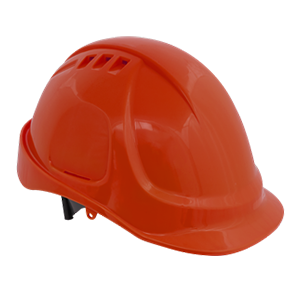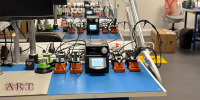


Workplace PPE is one of the ways you can equip yourself against the health and safety risks that are posed in your working environment. Failure to do so can lead to long term serious injury or even death as a worst case scenario.
So you can understand why your health and safety managers take this so seriously!
Therefore, through this article we will detail the areas of concern that need to be addressed. This way you can ensure you, and all other employees, are best protected from the risks posed in the workplace.
What Is Management Of Health & Safety At Work?
Firstly, in Great Britain, the Health and Safety at Work Act 1974 is the primary piece of legislation governing workplace health and safety. Because of this legislation, employers are primarily responsible for providing a safe workplace environment for their employees.
However, employees are also responsible for their personal safety. It is important to understand the key policies and procedures that are needed in order to keep your workplace safe and compliant.
So, we have written this blog to highlight the key factors that need to be considered in the workplace and an environment where there is a higher risk of accident or injury.
Workplace PPE That Needs To Be Considered
Eye & Ear Protection
Workplace PPE for your eyes and ears are key for injury and accident prevention.
Loud noise at work can damage your hearing and even cause permanent hearing loss and tinnitus. Subsequently, the Control of Noise at Work Regulations 2005 (the ‘Noise Regulations’) require action to be taken to eliminate risks to health and safety from noise at work.
Workplace ear protection should be supplied to employees where extra protection is needed above what has been achieved by controlling noise. Ear protection provided should be comfortable yet effective. It is the employer’s duty of care to provide employees with training on how to use and care for the ear protectors.
Prevent eye injuries in the workplace by wearing appropriate eye protection, and by the employer training their staff on how to use PPE in the workplace correctly. Injuries can occur by using the wrong eye protection, therefore, an understanding in which eye protection is most suitable is crucial.
Safety glasses with side protection (side shields) must be worn when working in an area that has particles, flying objects or dust, or if your job requires you to user a grinder, hammer or chisel. Goggles should be worn if you are working in an environment with chemicals. Special purpose safety glasses, goggles, face shields or helmets should be worn if you are working near hazardous radiation. Other ways of preventing eye injury are the use of a machine guard or work screens.
Safety Clothing & Footwear
Personal protective clothing and footwear protects users against potential risks in the workplace. Wear the correct PPE to avoid these injuries. They include:
- Breathing contaminated air, leading to lung problems (ie. soldering fumes, learn more about this here).
- Falling debris could injure your head or feet.
- Flying particles or splashes of corrosive liquids could damage eyes.
- Damage to skin from corrosive chemicals or materials.
Employees have a right to work in a safe and healthy environment, therefore, the supply of the correct PPE is essential. These can include safety glasses, safety toecap boots, helmets and ESD (electrostatic dissipative) clothing. Read our breakdown below:
Boots


Protective boots with steel toe caps prevent compression and foot injuries such as punctures, strains, crushing and falls. Many shoes also have ESD protection.
Gloves


The protection of the hands is vital to avoid burns or splashing from harmful chemicals and substances. Gloves therefore offer vital protection in some industry settings!
Headwear


Helmets are essential in some work environments where there is falling debris or risk of potential building collapse.
ESD Clothing


ESD garments are vital if you work within the electronics industry. These garments offer full protection against electrostatic discharge for operator and equipment.
To sum up, your clothing and footwear make up integral parts of your workplace PPE. As a result, wear the correct clothing for your work environment.
Footwear Safety Rating
Identifying the safety ratings of the shoes used in the workplace is also often overlooked. These ratings identify which safety boots are suitable for the user. There are 6 main safety rating abbreviations used in the UK.
| SB | Safety basic (toe protection) |
| S1 | Antistatic, oil-resistant & energy absorption |
| S2 | Prevents water penetration |
| S3 | Midsole penetration resistance |
| S4 | Leak proof |
| S5 | Leak-proof with midsole penetration resistance |
Identify the safety rating for your work setting and you will therefore be able to choose the most appropriate footwear to reduce the risk of injury!
Ergonomics
You can define the ergonomics in the workplace as the science of fitting a workplace to the users needs. The aim of this is to increase productivity and efficiency and reduce the risk of musculoskeletal disorders (MSDs).
Poor Ergonomics in the workplace can lead to reduced productivity, time off, loss of income, or pain and discomfort. Therefore, combatting the ergonomic issues within your workplace needs to be paramount.
Moreover, assess the posture and ergonomics of your workplace. To minimize the risk of injury, the employer should arrange the workspace so that the chair adjustment is correct, or other computer/work accessories are in a position where it does not require strained, repetitive or awkward postures of motions to access them.
Some other products that help to improve the ergonomics in the workplace include tool balancers or torque reaction arms.
Sanitation
Workplace sanitation products are essential for preventing illness and maintaining a safe work environment. Furthermore, the following are the fundamentals of workplace hygiene : personal hygiene; work area cleanliness; clean restroom facilities; and a clean kitchen.
Moreover, poor sanitation could spread harmful viruses and bacteria and could even create a mini epidemic. Good quality soap and hand sanitiser stations should be provided, and staff should be washing their hands regularly.
Sanitisers that are the most effective are alcohol based with a minimum of 60 percent alcohol, which protects against germs for a few hours after application.
Regular and thorough cleaning and disinfection regimes should take place in communal areas and anti-bacterial wipes should be provided for staff to clean their desk areas.
To Conclude...
In short, there is a lot to consider to ensure that your employees are safe in the working environment. Training staff in the correct use of PPE is of paramount importance. Create and maintain a safe working environment through your choice of workwear.
For any assistance in choosing the correct safety equipment for you and your workplace environment, give our experts a call and we can ensure you make the most optimal choice. Call 023 8065 0065 or email [email protected].














